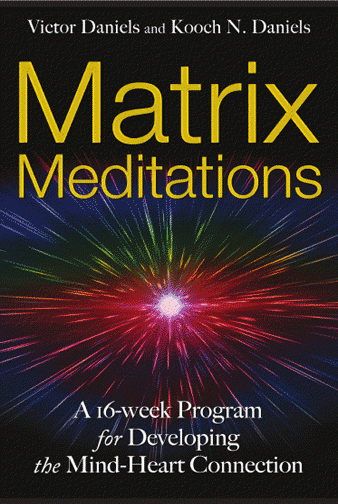MEDITATION — THE ESSENCE
Basic Meditation Instructions, Part I
INTRODUCTION, & STARTING YOUR SESSION
BENEFITS OF MEDITATION
Reduce your stress, feel more relaxed, become more focused, centered, and probably more successful, and clean up problem areas in your life. Seldom be bored, as you can almost always find something interesting around you or inside you to notice.
If you have never meditated, have tried and been unsuccessful, or are unsatisfied with your method, try this. (If you are an experienced and expert meditator and are looking for new depths and horizons in your practice, you’ll find them in other blogs soon to be posted and at this link.)
FOUR FORMS OF MEDITATION
The four kinds of meditation described here are suitable for ordinary people in their everyday lives. You do not have to sit in a cave in the mountains or go to a retreat center. The four are:
Concentrative meditation. You become able to focus your mind where you want it. (Research has shown that this skill improves life-effectiveness of diverse kinds.) Developing this capacity, and your mindfulness or witness consciousness, occur at the same time in the method described here.
Mindfulness meditation, aka witness consciousness. You learn to notice what your mind, emotions, and body are doing, moment by moment, rather than being completely caught up in your thoughts (as most people are most of the time.) This is called “mindfulness” in the Buddhist tradition and “witness consciousness” or “developing the witness” in the Yogic tradition. There are small differences between the two forms but they mostly overlap.
Everyday awareness practices. These help you take a more meditative consciousness into your everyday life. They are also ideal for people who have a hard time sitting still to meditate.
Contemplative meditation. Once you have mastered the two meditative forms just above, you will have the ability to meditate on specific aspects of your inner self or on outer concerns important to you. The resources of your large and creative unconscious mind will become available to supplement the conceptual thought, daydreams, and “monkey mind” that comprise most of most people’s ordinary waking consciousness.
HOW LONG SHOULD YOU MEDITATE?
Sit for at least five minutes to get any value from this. Ten or fifteen is better—but if you think, “I don’t want to spare that much time,” then just commit yourself to five minutes. When that time is up, sometimes you will probably want to continue. When you are starting out, don’t sit for more than half an hour. When you feel ready, you can allow yourself 45 minutes, or even an hour. Once you are experienced, you might want to go to a retreat where you sit for a day, or several, or even longer. But unless you have the supervision of a capable meditation teacher, stop after no more than an hour.
BEGINNING YOUR MEDITATION SESSION: YOUR POSTURE
For most people, the best thing is to sit up straight with no support for your back if you can do that. (Just noticing when you lose this position and slump helps you maintain a present-centered consciousness.) If your back muscles won’t hold you straight up you can sit with your back against a wall or the back of a chair. If all else fails, I have had some students meditate successfully while lying down.
If you are sitting cross-legged on the floor or the ground, sit on the front edge of a doubled-over pillow or a meditation cushion to raise your butt a few inches off the ground. Outdoors, sitting on a slope with your butt a little higher than your knees and feet will do. Or use any other object to raise your butt slightly. Otherwise you will have a hard time sitting up straight. You can sit in a full lotus posture with each foot upside down across the other thigh, a half lotus posture with just one leg above the other thigh, or a regular everyday cross-legged position.
If you are on a chair, choose one with no arms or low or wide arms so that both your elbows can extend outward comfortably. You can either put your feet facing forward just below your knees and about shoulder-width apart or you can cross them as if you were sitting cross-legged on the ground.
In any other position, do what feels best. Just know that it will be somewhat harder to develop your mental focus than in one of the positions just above.
Position your arms with your palms face up. Touch your thumb and forefinger or middle finger of each hand together. This is a mudra. As you inhale, let them separate about a sixteenth of an inch. As you exhale, let them touch each other. This is a moving mudra. (The moving mudra will help you focus and watch your mind. When you notice that they have stopped opening and closing as you breathe, it tells you that your attention has drifted off.)
A STARTING SEQUENCE
- 1. Balance. Find a sitting position in which you are totally centered in relation to gravity, so that if you move even a little forward or backward or to either side you feel unbalanced. Try those movements, then return to your center. I suggest that you also try this standing up. Imprint in your mind what that totally balanced position feels like. (Then later in the world, when you start feeling “off balance” or emotionally “pushed out of shape,” take a minute to physically balance as you just did. That’s your first “everyday awareness practice.)
- 2. Breathe. Sit (or lie down or whatever you do) in a position that opens your windpipe and lungs as fully as possible. If you are sitting or standing up, pushing your chin backward with one finger can help do this. . . .
- 3. Notice and release tension. The first time you do this, use the method described by Edmund Jacobson in 1929. Starting at the top of your head and going down to the tips of your toes, do an internal body scan. Notice each place in your body where you are holding even a teeny weeny bit of tension, intensify it for several seconds – tighter, tighter – then let it go. Some places many people hold tension is in their forehead, around the eyes, jaw, neck, shoulders, hands, arms, stomach, anal sphincter, thighs, and calves. (You may have your own unusual tight spots.)
After the first time, you can skip the tightening. Just do an eyes-closed body scan in which you release the tension you find at every point, except for whatever tension you need to sit upright. When you’re done – probably just a minute or two – notice how good your body feels when you let go of the places you chronically hold tight.
- 4. Take ten “snapshot” breaths. Count your breaths from one to ten. With each cycle of inhalation and exhalation, let your eyes rest on a different visual object. It can be anything from a statue to a smudge on the wall. Imagine that you’re taking a picture of it, and also that after you’re done you will have to draw it from memory, so scrutinize every detail of it as carefully as you can during that one breath. (You could also do this by listening to a different sound with each breath.) Why do these ten snapshot breaths? Because it is very nearly impossible to do them with a wandering mind. To do them successfully REQUIRES you to maintain mental focus. This gives you a hold on the reins of the wild horse of your attention, giving you enough mental focus that you can go on to other meditative practices.
CONGRATULATIONS! You are now meditating. You can stop now, or continue your session by simply continuing to count your breaths, or by repeating any mantra that has value for you on each breath for as long as you wish to continue.
When you are ready, you can go on by clicking on the links below.
Part I of this series of five mini-articles offered an introduction to what meditation can do for you and presented a useful meditation “starting sequence.”
Part II will describe concentrative meditation.
Part III will describe witness consciousness (yogic term) and mindfulness meditation (Buddhist term) and They overlap considerably but not totally.
Part IV will describe contemplative meditation. (not yet posted)
Part V will be on everyday awareness practices. (not yet posted)
Remember—all this is just “the essence.” If you’d like all this and many advanced practices too all in one handy place, you will enjoy Matrix Meditations, by Victor Daniels and Kooch N. Daniels. Click on the cover to go to the book’s home page. You can get the e-book for under $13.99, and used copies online for little more than postage. Of course, a brand-new paperback (from your local bookstore or another online vendor) is a treasure.
2-12-14


